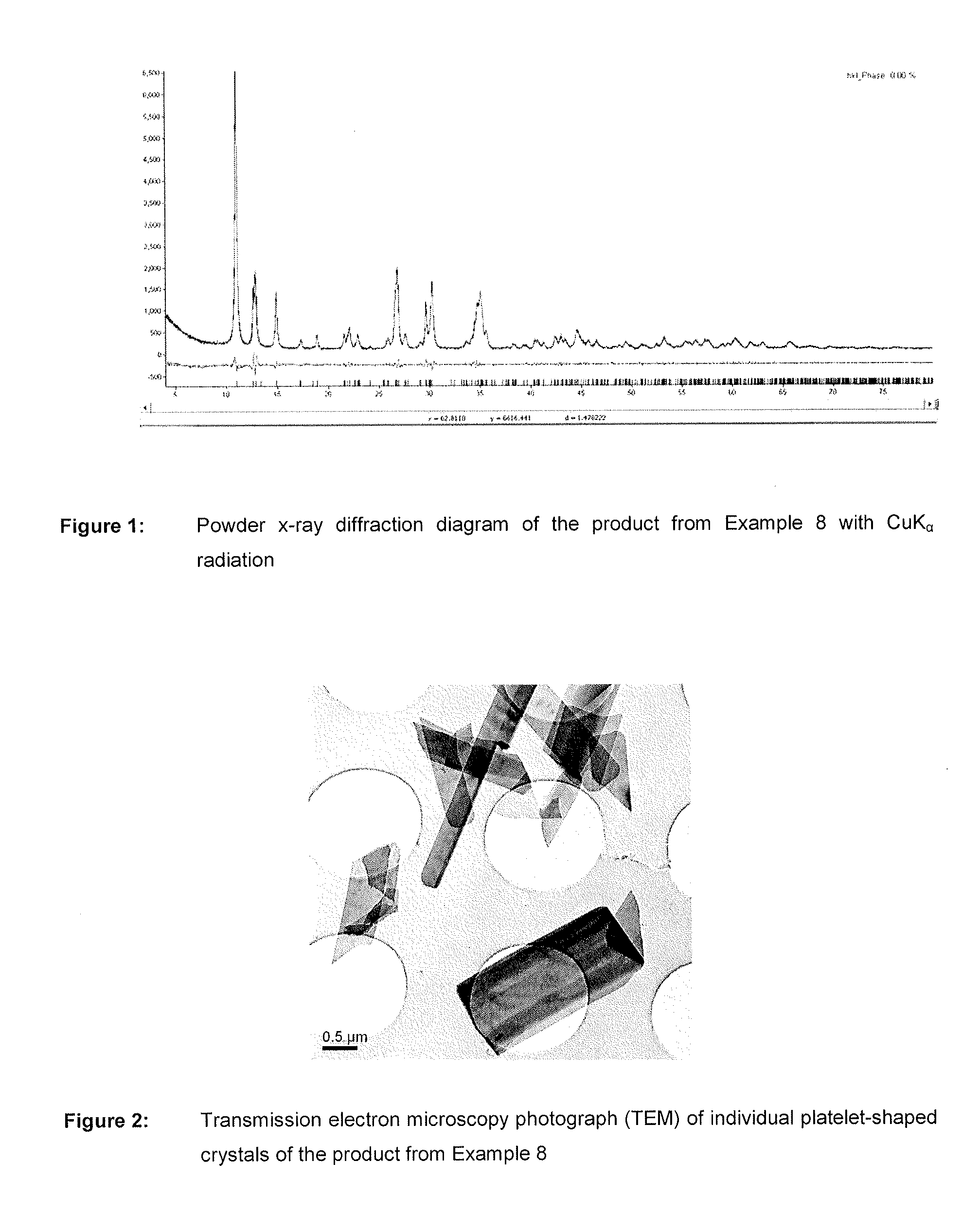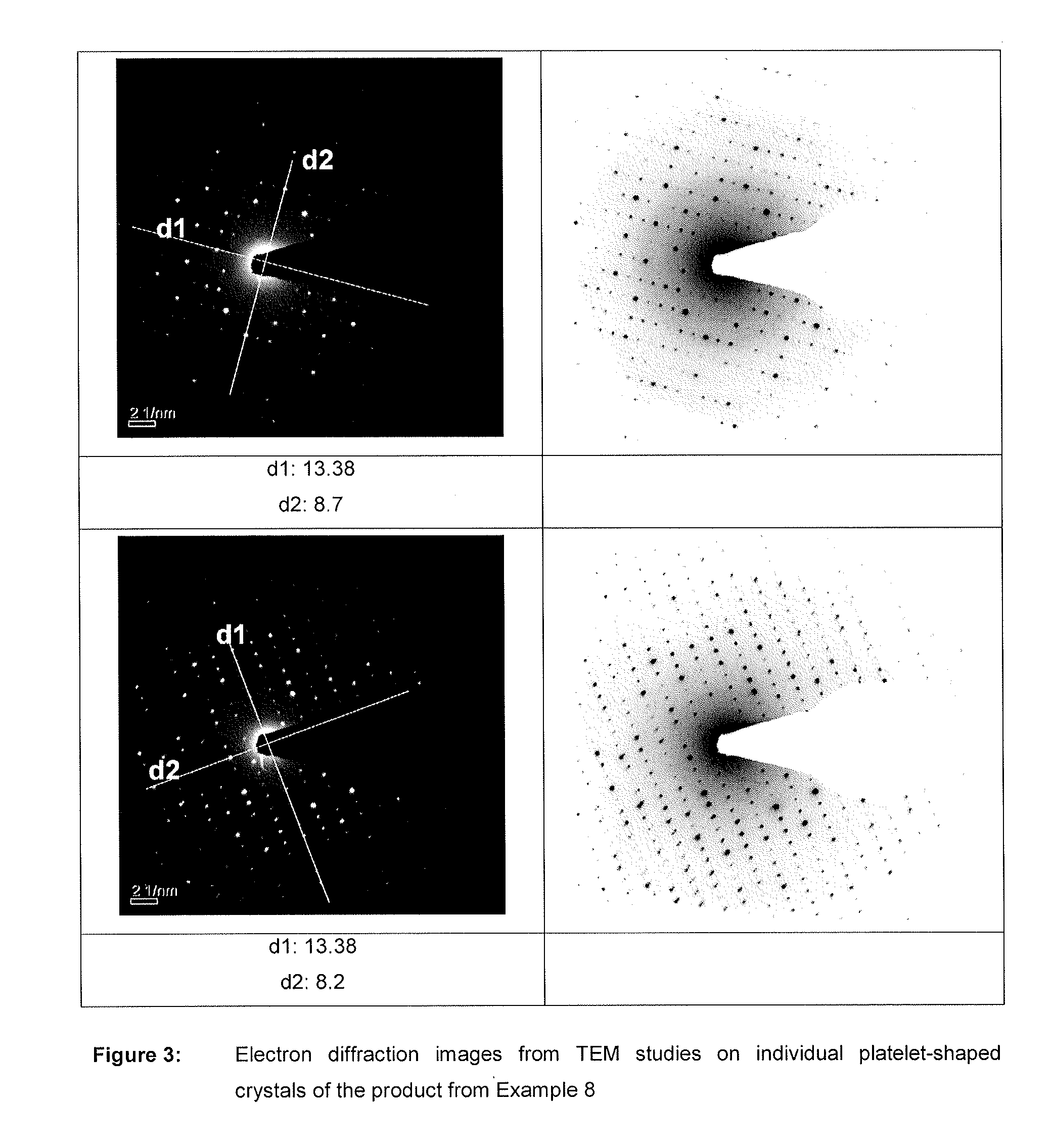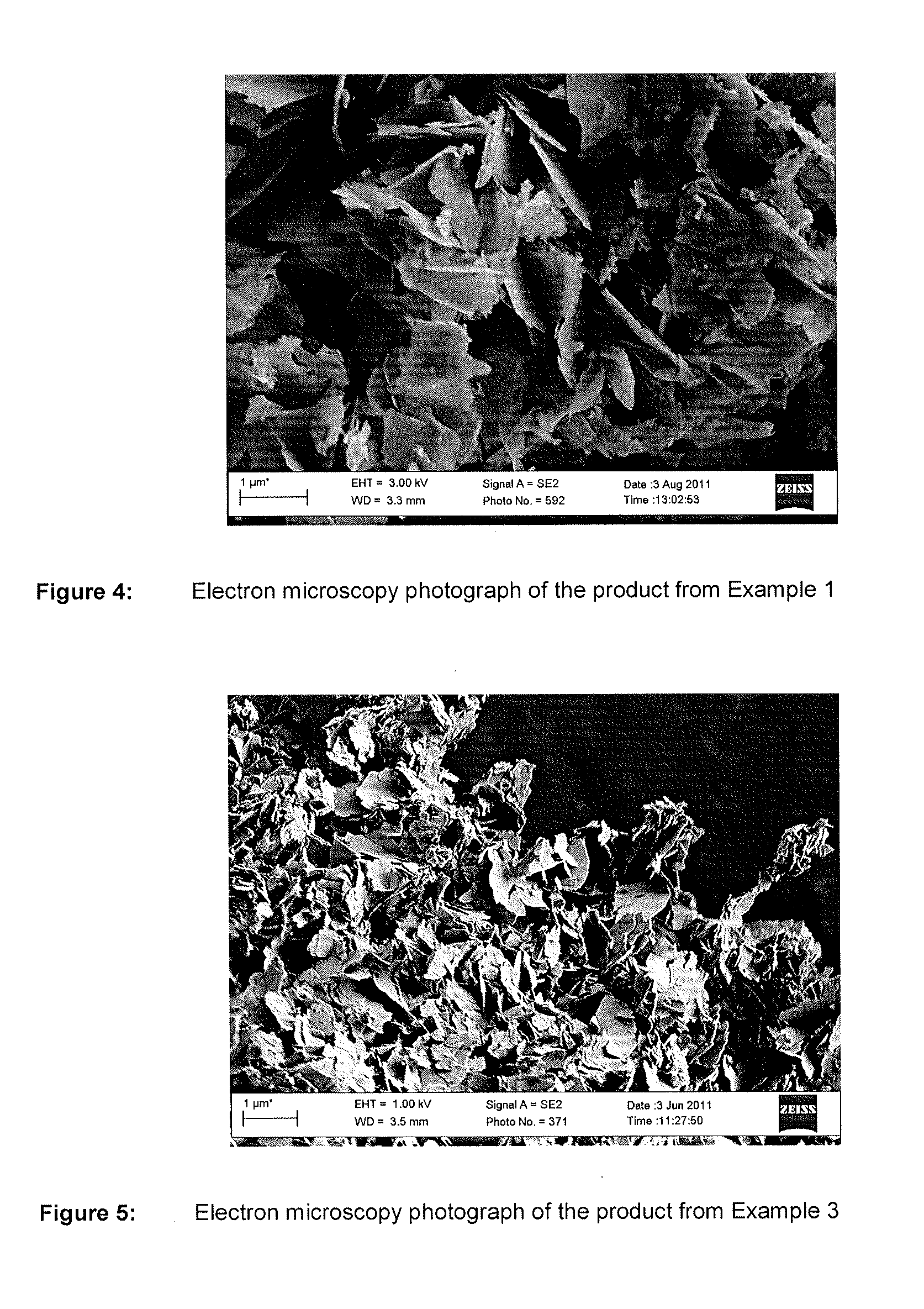Nutrient composition for biological systems
- Summary
- Abstract
- Description
- Claims
- Application Information
AI Technical Summary
Benefits of technology
Problems solved by technology
Method used
Image
Examples
example 1
[0078]A phosphoric acid solution (I) was prepared from 80 g of 75% strength H3PO4 and 160 g of deionized water. 14.3 g of Mn3O4 and 3.5 g of Fe were added to this solution (I). Solution (I) was stirred at room temperature for 90 minutes and then filtered in order to remove any remaining residues from the solution.
[0079]A basic solution of 40 g of NaOH and 1,000 g of deionized water was furthermore prepared. 25 g of H3PO4 with 100 g of water were then initially introduced into a reaction vessel and neutralized to a pH of 7 with the basic solution to give the initial charge solution (II). The phosphoric acid Me2+ solution (I) and the basic solution were metered simultaneously into the neutralized initial charge solution (II), while stirring, such that the pH of the initial charge solution (II) was always kept between 6.5 and 7. When the metering in had ended, the solution was stirred for a further 5 minutes. The solid precipitated was then filtered off with suction with the aid of a s...
example 2
[0080]A phosphoric acid solution (I) was prepared from 230 g of 75% strength H3PO4 and 460 g of deionized water. 8.9 g of MnO2 as well as 30.1 g of Mn3O4 and 13.1 g of Fe were added to this solution (I). Solution (I) was stirred at room temperature for 60 minutes and then filtered in order to remove any remaining residues from the solution.
[0081]A basic solution of 120 g of NaOH and 3,000 g of deionized water was furthermore prepared. 25 g of H3PO4 with 100 g of water were then initially introduced into a reaction vessel and neutralized to a pH of 7 with the basic solution to give the initial charge solution (II). The phosphoric acid Me2+ solution (I) and the basic solution were metered simultaneously into the neutralized initial charge solution (II), while stirring, such that the pH of the initial charge solution (II) was always kept between 6.5 and 7. When the metering in had ended, the solution was stirred for a further 5 minutes. The solid precipitated was then filtered off with...
example 3
[0082]A phosphoric acid solution (I) was prepared from 80 g of 75% strength H3PO4 and 160 g of deionized water. 14.3 g of Mn3O4 and 3.8 g of Co were added to this solution (I). Solution (I) was stirred at 60° C. for 60 minutes and then filtered in order to remove any remaining residues from the solution.
[0083]A basic solution of 40.4 g of NaOH and 229 g of water was furthermore prepared. 25 g of H3PO4 with 100 g of water were then initially introduced into a reaction vessel and neutralized to a pH of 7 with the basic solution to give the initial charge solution (II). The phosphoric acid Me2+ solution (I) and the basic solution were metered simultaneously into the neutralized initial charge solution (II), while stirring, such that the pH of the initial charge solution (II) was always kept between 6.5 and 7. When the metering in had ended, the solution was stirred for a further 5 minutes. The solid precipitated was then filtered off with suction with the aid of a suction filter and wa...
PUM
 Login to View More
Login to View More Abstract
Description
Claims
Application Information
 Login to View More
Login to View More - R&D
- Intellectual Property
- Life Sciences
- Materials
- Tech Scout
- Unparalleled Data Quality
- Higher Quality Content
- 60% Fewer Hallucinations
Browse by: Latest US Patents, China's latest patents, Technical Efficacy Thesaurus, Application Domain, Technology Topic, Popular Technical Reports.
© 2025 PatSnap. All rights reserved.Legal|Privacy policy|Modern Slavery Act Transparency Statement|Sitemap|About US| Contact US: help@patsnap.com



